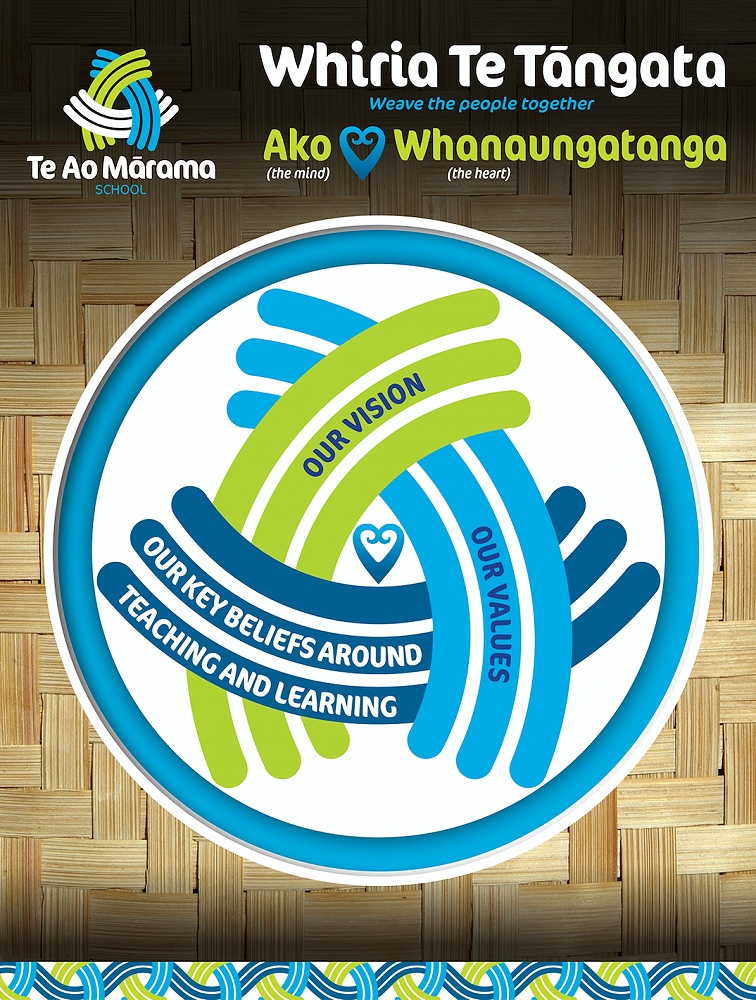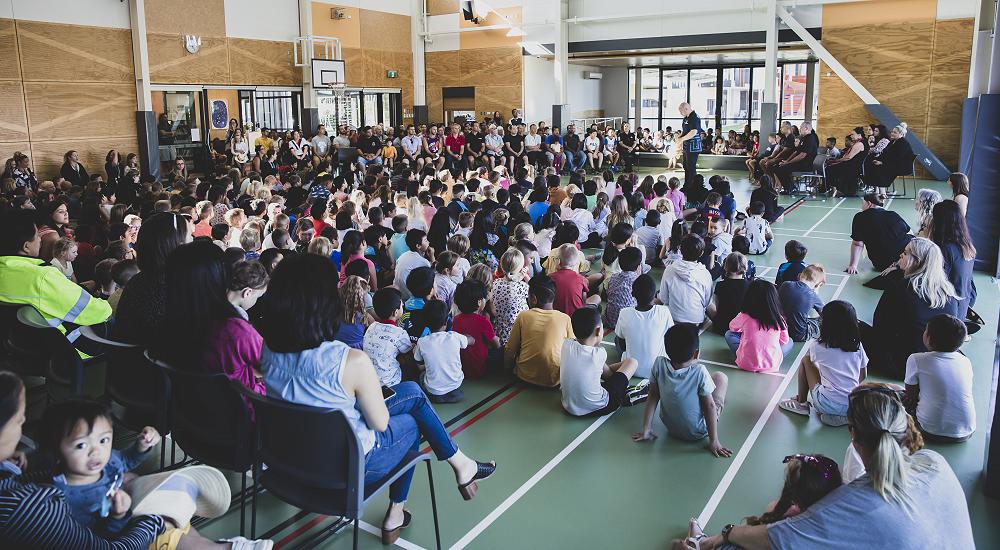
One school's journey toward cultural sustainability
Sharing our journey at Te Ao Mārama School with Foundation Tumuaki Tony Grey.
We prompted Tony with "Establishing a new school in a new developing community is such an exciting challenge. We are particularly interested in learning more about how your school has developed and sustained cultural narratives and ensured that the identities and needs of mana whenua and Māori akōnga are supported during and beyond transformational change?" and we were gifted with his thoughts as outlined below:
Right from my appointment as principal in 2017, I was fortunate to begin with the existing Foundation Board having a strong relationship with mana whenua (Ngāti Wairere). A mana whenua representative (Dr. Ngāpare Hopa) had been involved in the appointment of all of the Board, and provided a lot of historical/cultural advice.

There was a wonderful cultural narrative that had been written for the school, and this was used extensively in planning for the physical build (e.g landscaping, graphic design, etc).
It was always important for me (and the Establishment Board) to be authentic around aspects of Te Reo Māori and tikanga Māori.
Our school name was gifted to us by Dr. Ngāpare Hopa ("Whaea Pare"), a Ngāti Wairere (local iwi) elder. Whaea Pare wanted a name that would be all encompassing and link together Māori, European and the many other cultures, respecting the past, while also focusing on the present and future. The school name 'Te Ao Mārama' is a real taonga (gift) and considered very prestigious.

Whaea Pare was the first Māori woman to graduate from Oxford with a doctorate.
Meaning: ‘Te Ao Mārama’ is a Māori concept relating to wisdom and understanding, and the natural world of life and light.
Origin: It derives from the Māori belief in which Tāne (Māori guardian of the forest and birds) separated his Sky Father Ranginui and Earth Mother Papatūānuku to create a world of light and life. This world was known as ‘Te ao mārama’.
Our Board of Trustees have maintained a co-opted Ngāti Wairere representative and this provides ongoing, consistent, valued input. It is also integral in sustaining the relationship with mana whenua, rather than perhaps just the initial involvement, blessing of the school, etc. It is really important to us that we embed and sustain the relationship, and are proud that we have done so (e.g our 2022 staff only day was held at our local marae).

Once staff were appointed we were very targeted in the professional learning we did in this area. Key “touchstone” readings/videos were those of Janelle Riki-Waaka (Core Education) and also this short read below:
https://nzareblog.wordpress.com/2018/04/26/rakau-ngakau/
The idea of working from the ngākau became integral into our schoolwide philosophy - see here

Our school is very culturally diverse (40 countries represented). While NZ European is the largest group, at 22% it is hardly a dominant culture.

Right from day number one it was vitally important to us that we placed a huge focus on culturally responsive practices that value diversity; and validates culture, language and identity, with an emphasis on Te Ao Māori & Tainuitanga.

We acknowledge New Zealand's cultural diversity and the unique position of Māori as tangata whenua. Te Ao Mārama School's commitment to the principles of the Treaty of Waitangi is reflected through the following:
- Partnership and Consultation: We recognise and value all cultures at our school and acknowledge the special position of Māori in New Zealand society. We work together to achieve the best environment for success for our students. We consult with our Māori community and access cultural advice as appropriate.
- Protection: We respect each person's culture and their right to follow their cultural direction. We promote the value of Te Reo and tikanga Māori.
- Participation: We promote Māori achievement and equal opportunities for all members of the school community, including our staff, and our students who need extra support at school. These principles guide our practice and are incorporated into our policies and procedures.
In recognising the unique position of the Māori culture, we provide instruction in tikanga (culture) and Te Reo Māori (language) for students. We foster Māori culture through:
- Teaching Te Reo Māori to an elementary level (Note: We are Level 4 Māori language funded)
- Using resources in the curriculum which recognise New Zealand's dual cultural heritage
- Integrating tikanga Māori through all curriculum areas where appropriate
- Cultural group
- Annual Visits to marae
I am incredibly proud of our Level 4 Māori language approach across the whole school. The additional funding supports specialist teacher time and also the employment of a kaiarahi.
We have also grown our own staff expertise to ensure that we can run our own pōwhiri (rather than requiring support from the iwi).



To ensure we grow the proficiencies of our staff we have strategic supports in place around professional learning, specialist roles to support (via units, within school teacher role {Kāhui ako}) and large budgets to support.
Many staff have completed Wānanga courses, Te Ahu o te Reo Māori, and also online courses (we also held our own virtual workshops in Term 4 2021). While staff are at different places, a key advantage of co-teaching is the constant support and modelling across teaching teams.

We are also fortunate that our local Kāhui Ako (Te Pae Here) has a focus on this area too, and have done some fantastic work with our local iwi, which led to the development of this resource here: https://www.ngaapuna.org
Regular reviews are also being done schoolwide, in consultation with our parents/whānau.
One of our early staff reviews (inspired by Janelle Riki-Waaka - what do you see, feel, hear?) was a real highlight as staff commented extensively on hearing Te Reo Māori being spoken regularly by staff and students, and also “feeling it” (e.g manaakitanga, whanaungatanga, etc), but also identified areas that we could “see it” more. This I felt was rich feedback as in some schools you may “see it”, but…is a danger that is perhaps tokenistic (rakau not ngākau) e.g labels, Te Reo in smaller font below English school values, etc.
This then led to the development of various visuals to support with the cultural narrative of our kura.

Whakatauki (these are also on windows of classes)


Entry mural at Te Ao Mārama- reflecting Rangi and Papa

Te Ao Mārama School Pepeha

Initial designs of large Pāwaha (5.5m tall) in entrance to school. Designed together with mana whenua to reflect our narrative and also Kingitanga.

Our active kapa haka group proudly perform at our hui and beyond.
Feedback and support is always sought from our whānau, with regular hui specifically to engage our Māori families. Our most recent schoolwide feedback/survey was end of 2021, and captured here: https://www.teaomārama.school.nz/3/pages/54-surveys
We believe that cultural sustainability and our commitment to our bicultural heritage is an ongoing process, one that we are proud of, and dedicated to, at Te Ao Mārama.
Tony and his team are on a fantastic, reciprocal, inclusive, transparent learning journey when it comes to cultural sustainability and they have developed strong foundations for future learning, future ākonga, future whānau and future kaiako. A giant thank you for sharing with our Tārai Kura community. 'He waka eke noa.'
If you would like to learn more about Te Ao Mārama School please see their website https://www.xn--teaomrama-9bb.school.nz/ or contact Tony at tony@teaomarama.school.nz. He is incredibly generous with his time when it comes to helping others and sharing the amazing mahi of his team.
